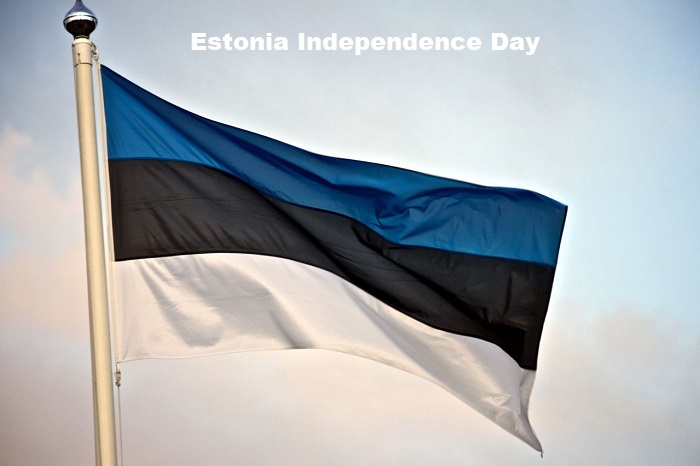When is Estonian Independence Day- Blogs Year

Estonian Independence Day is a national holiday in Estonia that is celebrated on February 24th every year. The holiday marks the anniversary of the Estonian Declaration of Independence, which was issued in 1918.
Also Read:-Belgium National Day- Independence Day of Belgium, 21 July
Each year on February 24, Estonians celebrate their independence. Estonia’s national holiday, Independence Day, commemorates the anniversary of the Declaration that established the Republic of Estonia on this day in 1918. The Baltic Sea and the Gulf of Finland are both bordered by the northern European nation of Estonia. Estonia’s varied landscape includes rocky beaches, old-growth woods, and several lakes. It is home to more than 1,500 islands. Estonia attracts visitors to see its castles, cathedrals, and fortified hills. There are about 1.3 million people living in Estonia. Parades, concerts, and parties are all part of Estonia’s Independence Day celebrations.
The history of Estonia is marked by periods of foreign domination and control. In the early 20th century, Estonia was part of the Russian Empire, but after the fall of the Russian monarchy in 1917, Estonia began to pursue greater autonomy and independence.
On February 24th, 1918, the Estonian Declaration of Independence was issued by the Estonian National Council, a group of political leaders representing various political parties and organizations in Estonia. The declaration asserted the country’s sovereignty and declared Estonia to be an independent republic.
The declaration was not immediately recognized by other countries, and Estonia had to fight a war for its independence against Soviet and German forces. The country finally gained full independence in 1920, and over the next two decades, it established a democratic government and made significant economic and social progress.
Estonia’s independence was interrupted during World War II, when the country was occupied by the Soviet Union and then Nazi Germany. After the war, Estonia was again incorporated into the Soviet Union, but the country regained its independence in 1991 following the collapse of the Soviet Union.
Today, Estonian Independence Day is an important national holiday that is celebrated with parades, concerts, and other cultural events across the country. The holiday is an opportunity for Estonians to reflect on their country’s history and to celebrate its achievements as a modern, independent, and democratic nation.
History of Estonian Independence Day
Estonia’s independence can be traced back to the end of World War I when the Russian Revolution of 1917 created an opportunity for Estonians to pursue greater autonomy and independence. After the fall of the Russian monarchy, Estonia declared itself an autonomous republic within the Russian Federation. However, the situation was still unstable, and Estonians continued to push for full independence.
On February 24th, 1918, the Estonian National Council, a group of political leaders representing various political parties and organizations in Estonia, declared the country’s independence from Russia. The Estonian Declaration of Independence declared that Estonia was a sovereign state with its own government, and it was recognized by Western powers shortly after.
However, Estonia’s independence was challenged by the Soviet Union, which sought to incorporate Estonia into its communist system. In 1940, Soviet forces invaded Estonia and the country was forcibly incorporated into the Soviet Union.
During World War II, Estonia was occupied by Nazi Germany, but the Soviet Union regained control of the country at the end of the war. Estonia remained a part of the Soviet Union until 1991 when the country declared independence in the aftermath of the collapse of the Soviet Union.
Estonia’s independence was recognized by most countries around the world, and the country has since established a modern democratic government and a market-oriented economy. Estonia has become a member of the European Union and NATO and has become known for its technological innovation, e-governance, and high standard of living.
Estonian Independence Day is celebrated on February 24th every year to commemorate the country’s independence and its achievements as a modern, independent, and democratic nation. The holiday is marked by parades, concerts, and other cultural events across the country, and it is an opportunity for Estonians to celebrate their national identity and to reflect on their country’s history.
FAQs Estonian Independence Day
Here are some frequently asked questions about Estonian Independence Day:
- When is Estonian Independence Day?
Estonian Independence Day is celebrated on February 24th every year.
- What does Estonian Independence Day commemorate?
Estonian Independence Day commemorates the country’s declaration of independence from Russia on February 24th, 1918.
- When did Estonia become independent?
Estonia declared independence on February 24th, 1918, but its independence was interrupted during World War II when the country was occupied by the Soviet Union and then Nazi Germany. Estonia regained its independence in 1991 following the collapse of the Soviet Union.
- How is Estonian Independence Day celebrated?
Estonian Independence Day is celebrated with parades, concerts, and other cultural events across the country. It is an opportunity for Estonians to celebrate their national identity and to reflect on their country’s history.
- What is the significance of Estonian Independence Day?
Estonian Independence Day is an important national holiday that celebrates Estonia’s independence and its achievements as a modern, independent, and democratic nation. The holiday is an opportunity for Estonians to come together and to express their pride in their country.
- Is Estonian Independence Day a public holiday?
Yes, Estonian Independence Day is a public holiday in Estonia, and all government offices, schools, and most businesses are closed on this day.
- How long has Estonian Independence Day been celebrated?
Estonian Independence Day has been celebrated since 1918, when the country declared its independence from Russia. However, the holiday has taken on different meanings and significance over time, depending on the country’s political and social context.








